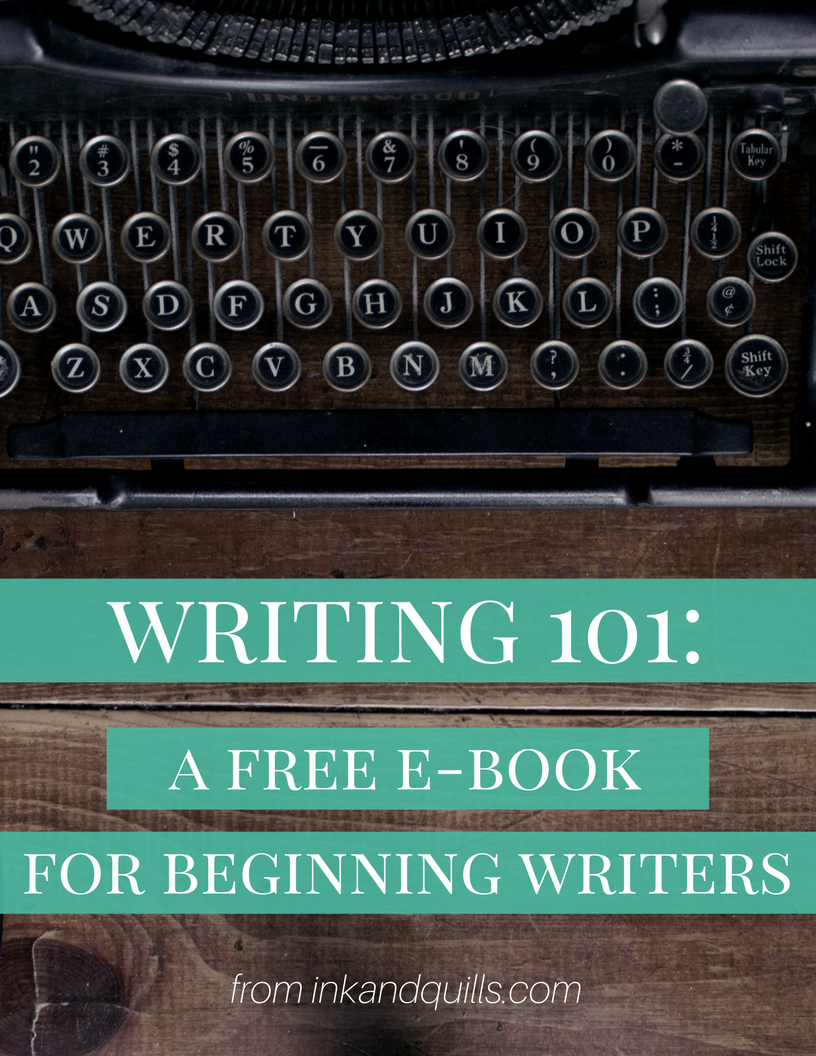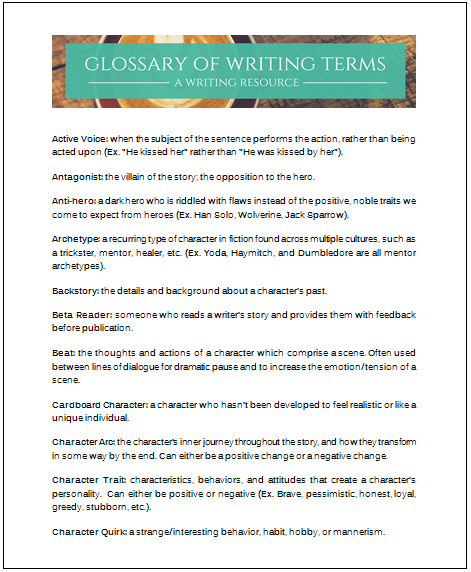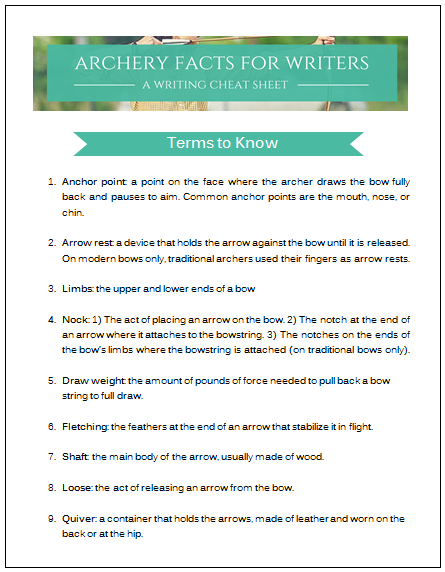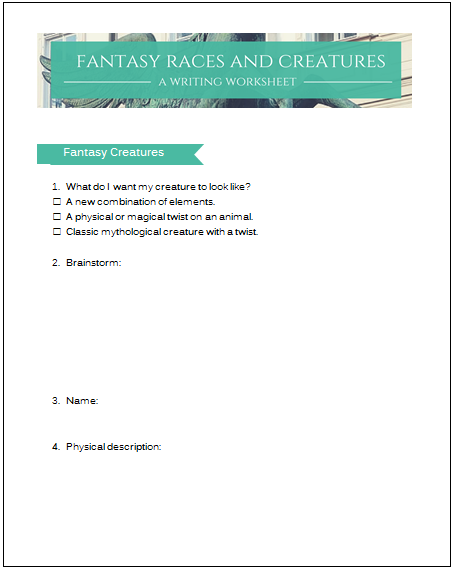 In my last post, I shared with you 5 ways to disappointment-proof your series. Today, I’m back with Part II, as promised! (Psst, if you missed Part I catch up here!)
In my last post, I shared with you 5 ways to disappointment-proof your series. Today, I’m back with Part II, as promised! (Psst, if you missed Part I catch up here!)
So without further ado, here are 5 more tips for making sure your series kicks butt!
1. Follow Through on Your Plants
No, I’m not talking about gardening here. “Plant and payoff” is a technique where a piece of information, object, character, etc. is planted in the story and is later revealed to have significance (the payoff).
This is also similar to “Chekov’s Gun,” a technique named after the Russian playwright Anton Chekhov. He wisely said that if you put a gun on stage in Act I, it should be fired in Act II. He also reasoned for the opposite of this technique: if you don’t intend to fire the gun in Act II, don’t put it on the stage in Act I.
Everything in your story must have a purpose or significance. Why? Because if it doesn’t, it could lead to confusion or disappointment in readers. Savvy readers pick up on planted details and file them away for later as they read, knowing that if the author is mentioning it, it will probably be important later. They expect you to use them.
If you spend time talking about a ruby ring the reader will think, ‘this must be important’ and make a mental note of it. But if the ring never comes up again, at the end of the story they might be left scratching their heads wondering why you bothered mentioning the ring at all.
My point is, don’t add unnecessary details that will be wasted and unused. Every plant must have a payoff, or it has the potential to do more harm than good.
For example, in The Wrath and the Dawn by Renée Ahdieh, **spoilers** it is planted that the heroine, Shazi, has dormant magical abilities. This leads readers to expect that Shazi’s magic will be of significant importance in the plot. Especially when in the sequel, The Rose and the Dagger, she tries to learn how to use her magic.
Unfortunately, there’s no satisfying payoff for this plant. Shazi’s magic doesn’t play a significant role and could have been left out without hurting the story. To apply Chekov’s Gun to this: If you don’t intend to use your heroine’s magic in book II, don’t introduce it in book I. **end spoilers**
2. Continue to Develop Your Characters
In your sequel or series, pay attention to your characters and make sure they don’t remain stagnant. They should continue to grow and change as a result of the challenges and experiences they encounter in each book. You don’t want your hero to be the same at the end of your series as he was at the beginning of book one.
You can also continue to deepen your characters by:
a) Revealing more about them and exploring their background
b) Continuing to deepen the relationships and conflicts between characters
All of these techniques are used in Game of Thrones, and its part of what makes the show continue to get even better as it goes along. The characters continue to adapt, evolve, learn, and change heart, making us wonder who they will be by the story’s end. Plus, the conflicts and interactions between characters keep us interested and riveted.
3. Foreshadow Your Plot Twists
Plot twists are fun, but if you’re going to have a plot twist you must make sure you set it up properly for your readers (This goes back to #1 with plant and payoff). But if the point of a plot twist is to surprise readers, then why should you plant clues or foreshadow?
Plot twists should be surprising, yes, but the last thing you want is for them to feel random. Foreshadowing means playing fair with readers and giving them the chance to figure out the plot twist. They should feel like if they had been paying closer attention they could have figured it out.
Clues and foreshadowing allow readers to look back and think ‘oh yes, that makes sense now, I should have realized that!’ (Or for more perceptive readers, ‘oh yes, I suspected that might be coming!’). What you don’t want is for them to look back and think ‘where in the world did that come from?’ Think of foreshadowing as the evidence that supports the surprise so the reader will believe what you’re revealing to them.
In a series, pulling off plot twists might mean foreshadowing or planting clues several books in advance. That’s why planning out your series is extremely important! Know your plot twists ahead of time, and sprinkle hints throughout your books accordingly. Otherwise, you’ll rip the proverbial rug out from under your readers and leave them feeling confused or frustrated.
(Side note: If you need examples to study, both J.K. Rowling and George R.R. Martin are masters at this)
4. Increase the Hero’s Difficulties
As your series begins to reach its end, things should become harder and more complicated for the hero as your series heads into its climax. His situation should become more dire, the consequences of failing more severe, the chances of succeeding more slim. He should face more obstacles, as well as strong opposition from the villain.
All of this serves to increase the tension of your story and make the hero work to achieve his goal. This will lead to a more satisfying conclusion because it will feel like the hero “earned” it.
What you don’t want to do is make things easy for him. If readers aren’t worried about what the outcome may be, they will lose interest and the climax will lose its umph. So don’t let your hero win every fight, overcome every obstacle with little effort, or face off against against a villain who’s a pushover. Otherwise, your climax will fizzle.
5. Stay True to the First Book
Finally, in some way you want to stay true to the heart of your original story. Sequels aren’t about being bigger or better; when readers want a sequel, what they really want is to once again feel the same experiences or emotions you gave them in the first story.
For example, in Harry Potter, we fall in love with the wonder and magic of the wizarding world, and are endeared by the themes of loyalty and friendship. J.K. Rowling carries these themes throughout the books, and these concepts are the heart of the series.
Examine your first book for its heart and themes. Figure out what readers will feel and experience emotionally. Then, continue to give them that emotional experience throughout your series. If you keep readers emotionally engaged in this way, it will be hard for them to find your series disappointing.
What do you look for in a sequel? What do you find disappointing? Share in the comments below!
























Wow! This helps a lot! I’m writing a sequel for a book that I didn’t write, and this has been encouraging that I’m doing a few things right! Thanks for a great post!
Once again, this article was gold! Thank you for this, Kaitlin. Point #3 was especially helpful. This post overall had me furiously typing out notes and ideas for my sequels. I know I’ll be referring back to both of these posts in the future!!
Thanks, Kaitlin. When continuing a series, I’ve found rereading the previous book(s) an integral part of the process. I highlight on my e-reader and make notes of important details I’ve forgotten over time. Then, the characters are fresh in my mind; I’ve fallen in love or hate once again; and the passion that made me write the story in the first place is regenerated.